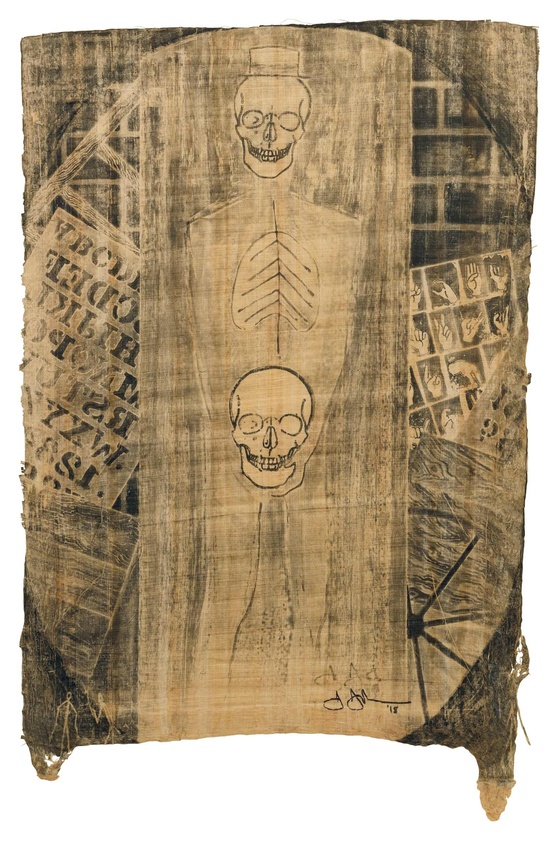Human Interest: Scott Rothkopf on Jasper Johns
Dec 15, 2016
Scott Rothkopf describes the many portraits visible in Racing Thoughts by Jasper Johns, and connects the painting with his work as the Whitney's chief curator. View more from this series.
I’m Scott Rothkopf, the Whitney’s chief curator, and we’re in the exhibition Human Interest which I co-curated, looking at Jasper Johns’s Racing Thoughts.
The term racing thoughts can be related to a sense of anxiety. I think it also can be related to creativity—to all the different thoughts that are appearing before us in this picture, and the way that Johns kind of gathers them together, but without one conclusion. When I look at this painting, I am in a certain headspace that feels kind of dreamy, almost. It keeps giving me more every time I look at it, and I don’t think it’s something I’ve ever fully solved.
It is a portrait containing many portraits within it. When you look at it, you see, at first, two faces. One is one of the most recognizable portraits in the whole history of art, the Mona Lisa. The other is Leo Castelli, who was Jasper Johns’s dealer for many years. There’s a Barnett Newman print above, who's an artist he knew and admired, and this is a work in Johns’s personal collection. Some people think of this painting as a self-portrait of Johns. You see, on the bottom right, the water running, as though he is maybe lying in the bathtub, looking up at all of these images that are of personal importance to his life.
This notion of artists looking at each other, of artists presenting each other, of artists in dialogue with each other seems to be very related to the Whitney Stories project because here we are capturing how artists think about another artist's work. Museums are for the public and they’re for visitors, but they’re also for artists. Artists come to museums for inspiration; they come to see the work of their heroes.
I think this painting in some ways speaks to what curators do: the gathering of images, the hanging of them, the arranging of them. This room is a good example of seeing works that are around a hundred years old, just a few feet away from paintings that were finished last year. And I think if I’m doing my job right, I’m bringing something to these works that feels alive today.

